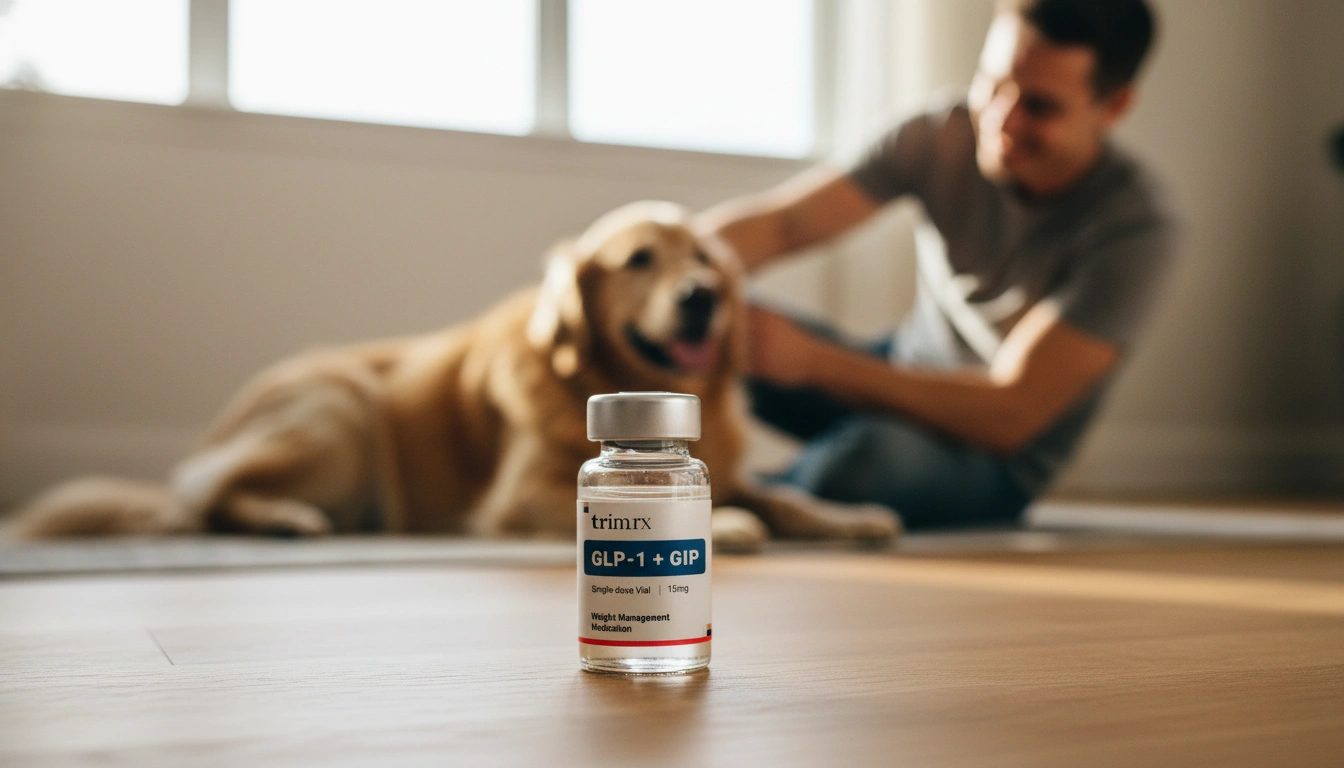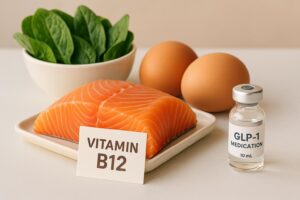Does the Body Make GLP-1? Understanding the Role of This Key Hormone in Weight Management

The human body is a complex machine, continuously working to maintain balance and functionality. One fascinating aspect of this balance is the production of hormones that regulate various bodily functions, including appetite and metabolism. Among these hormones, glucagon-like peptide-1 (GLP-1) plays a pivotal role in managing blood sugar levels and influencing our feelings of hunger and satiety. But does the body make GLP-1? And how can understanding this hormone improve our approach to weight management?
As we delve into this topic, we will explore the significance of GLP-1, how our body produces it, and the impact it has on weight loss. Additionally, we will examine how TrimRx, with its dedication to personalized weight loss solutions, can help individuals harness the power of GLP-1 through medically supervised programs and innovative approaches.
Introduction
Did you know that our gut produces a hormone that could significantly influence our appetite and glucose levels? It’s true! GLP-1 is a naturally occurring hormone that our bodies synthesize in response to eating. This hormone’s primary role is to stimulate insulin secretion, inhibit glucagon release, and slow gastric emptying, all of which contribute to appetite regulation. Understanding GLP-1’s function and its impact on weight management is more relevant than ever, especially in a time when obesity rates are climbing globally.
In this blog post, we will answer the question: does the body make GLP-1? We will discuss its production, how it functions in the body, and the implications for weight management strategies. Furthermore, we will highlight TrimRx’s approach to leveraging GLP-1 through personalized weight loss solutions, ensuring a comprehensive understanding of this essential hormone and its role in our health journey.
By the end of this article, you will have a deeper understanding of GLP-1, its significance in regulating appetite and blood sugar, and how you can take steps towards a healthier lifestyle with TrimRx’s support. Let’s embark on this exploration together!
Understanding GLP-1: What Is It?
GLP-1, or glucagon-like peptide-1, is a 30-amino acid peptide hormone produced primarily in the intestinal L-cells. These specialized cells release GLP-1 in response to nutrient intake, particularly carbohydrates and fats, during the digestive process. As a member of the incretin family of hormones, GLP-1 plays a crucial role in the body’s metabolic regulation.
The Biological Role of GLP-1
Upon its release, GLP-1 exerts several important functions:
-
Stimulating Insulin Secretion: GLP-1 enhances the secretion of insulin from the pancreas when blood sugar levels are elevated, helping to lower glucose levels in the bloodstream.
-
Inhibiting Glucagon Release: By suppressing the release of glucagon, another hormone that raises blood sugar levels, GLP-1 helps maintain balanced glucose levels.
-
Slowing Gastric Emptying: GLP-1 slows the rate at which food leaves the stomach, leading to prolonged feelings of fullness and reduced appetite.
-
Regulating Appetite: GLP-1 acts on the brain’s appetite centers, helping to signal satiety and reduce the desire to eat.
These functions collectively contribute to weight management, making GLP-1 an essential hormone in the context of obesity and type 2 diabetes.
How Does the Body Produce GLP-1?
The production of GLP-1 begins in the gut, where specific stimuli trigger its release. When we consume food, particularly those rich in carbohydrates and fats, the nutrients stimulate the L-cells in the intestines to produce GLP-1. This response is part of the body’s natural mechanism to regulate blood sugar and appetite.
After its release, GLP-1 has a short half-life, meaning it is quickly broken down by the enzyme dipeptidyl peptidase-4 (DPP-4). This rapid degradation is why the effects of GLP-1 are transient, necessitating continuous production of the hormone throughout the day, especially in response to meals.
The Importance of GLP-1 in Weight Management
Understanding the role of GLP-1 is crucial for individuals seeking to manage their weight effectively. The hormone’s ability to promote satiety and regulate insulin levels makes it a focal point in the treatment of obesity and metabolic disorders.
GLP-1 and Appetite Regulation
Research has shown that individuals with obesity may experience diminished GLP-1 responses after eating. This means that the natural appetite regulation system may not function optimally, leading to increased food intake and weight gain. By understanding this mechanism, we can better appreciate why some individuals struggle with weight management.
Medications Mimicking GLP-1 Effects
Given the critical role of GLP-1 in appetite regulation, pharmaceutical advancements have led to the development of GLP-1 receptor agonists—medications that mimic the effects of the natural hormone. Drugs such as semaglutide (Ozempic, Wegovy) and tirzepatide (Mounjaro, Zepbound) have been shown to promote weight loss by enhancing satiety and reducing food intake. These medications are particularly beneficial for individuals who may not achieve adequate results from lifestyle changes alone.
At TrimRx, we recognize the potential of GLP-1 medications in supporting weight loss journeys. Our personalized weight loss programs include access to these medications through our network of FDA-registered and inspected pharmacies, ensuring a safe and effective approach to weight management.
How to Boost GLP-1 Naturally
While medications can effectively enhance GLP-1 levels, there are natural ways to support the body’s production of this hormone. Here are some strategies to consider:
1. Increase Dietary Fiber Intake
Fiber-rich foods, such as whole grains, fruits, vegetables, nuts, and legumes, can stimulate GLP-1 secretion. Research suggests that soluble fibers, like those found in oats and barley, are particularly effective in promoting GLP-1 release. By incorporating more fiber into our diets, we can potentially enhance our body’s natural GLP-1 production and improve appetite regulation.
2. Focus on Protein and Healthy Fats
Foods high in protein and healthy fats can also influence GLP-1 levels. Eggs, avocados, and nuts are excellent sources that not only provide essential nutrients but also help increase feelings of fullness. By prioritizing these foods in our meals, we may naturally boost GLP-1 production and support weight management.
3. Regular Physical Activity
Exercise has been shown to improve insulin sensitivity and may enhance GLP-1 levels. Engaging in regular physical activity, including both aerobic and resistance training, can positively impact metabolic health and contribute to the body’s ability to manage weight effectively.
4. Consider TrimRx’s Personalized Approach
At TrimRx, we offer personalized weight loss solutions that combine dietary guidance, lifestyle modifications, and access to FDA-approved GLP-1 medications. By taking our free assessment quiz, individuals can determine their eligibility for prescription weight loss medications, tailored to their specific needs. This comprehensive approach ensures that each person receives the support necessary for sustainable weight loss.
Conclusion
In summary, GLP-1 is a vital hormone that our bodies produce in response to food intake. Its role in stimulating insulin secretion, inhibiting glucagon, slowing gastric emptying, and regulating appetite makes it a key player in weight management. Understanding how GLP-1 functions allows us to appreciate the complexities of obesity and metabolic health.
While the body naturally produces GLP-1, individuals can take steps to enhance its levels through dietary choices and lifestyle changes. Moreover, for those needing additional support, medications that mimic GLP-1’s effects can provide significant benefits.
At TrimRx, we are dedicated to helping individuals achieve their weight loss goals through personalized, medically supervised care. By integrating science, empathy, and transparency, we aim to empower you on your journey to a healthier lifestyle. If you’re ready to explore how TrimRx can support your weight loss efforts, take our free assessment quiz today here.
FAQ
What is GLP-1?
GLP-1 (glucagon-like peptide-1) is a hormone produced in the intestines that plays a crucial role in regulating blood sugar levels and appetite.
How does the body produce GLP-1?
GLP-1 is released by intestinal L-cells in response to food intake, particularly carbohydrates and fats.
What are the benefits of GLP-1 for weight management?
GLP-1 helps regulate appetite, promotes feelings of fullness, and stimulates insulin secretion, all of which contribute to effective weight management.
Can I boost GLP-1 levels naturally?
Yes, increasing dietary fiber intake, focusing on protein and healthy fats, and engaging in regular physical activity can support the body’s natural production of GLP-1.
How can TrimRx help me with weight loss?
TrimRx offers personalized weight loss solutions that include access to FDA-approved GLP-1 medications, dietary guidance, and lifestyle support. Take our free assessment quiz to get started!

Transforming Lives, One Step at a Time
Keep reading
Vitamin B12 and GLP-1 Medications: What to Know
GLP-1 medications can lower B12 absorption and intake; learn symptoms, food sources, supplement options, and how to monitor levels.
Semaglutide Injection Site Reactions: What To Know
Learn why semaglutide injections can cause redness, swelling or nodules, how to prevent and treat them, and when to seek medical care.
TrimRx vs Friday’s
Compare TrimRx and Friday’s telehealth GLP-1 weight-loss programs: pricing, medical support, coaching, delivery, and which fits your needs.



